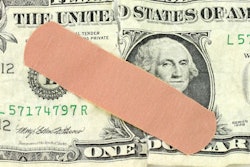
When collections are down, so is cash flow, which makes it difficult to move your practice forward. Instead of investing in technologies and updates that can help your practice thrive, you're worried about simply making ends meet.
How can you turn this around and increase practice profits? I tell my clients to start by developing a financial policy and a collections protocol. Their experience with these changes suggests a steady cash flow. The ability to make those improvements you've been putting off will follow.
4 tips
If the thought of developing these policies and protocols is overwhelming, don't worry. Here are four tested and trusted tips to get you started:
Hire a qualified financial coordinator
I know that you are wondering how you can afford to hire a financial coordinator if your practice is struggling. Real-life experience with practices suggests that bringing someone on to help with financials will do your practice a world of good. The salary you pay will be money well spent.
 Sally McKenzie, CEO of McKenzie Management.
Sally McKenzie, CEO of McKenzie Management.As you begin your search, keep in mind this important position can be difficult to fill. Not everyone has the skill set and temperament needed for the role, so resist the temptation to hire the first person you see with an impressive resume. Look for someone who is assertive, goal-oriented, confident, polite, and tactful. Your financial coordinator must like working with numbers and be comfortable handling confrontation. This team member will be responsible for collecting payment, generating accounts receivable, and following up on delinquent accounts.
Once the right person is found, many practices seem to expect this important new hire to just hit the ground running with little or no direction. Don't make that mistake. Put together a job description complete with your expectations and provide all necessary training.
Monitor accounts receivable
This is not a favorite topic among dentists, but tracking accounts receivable is vital to your success. Here's how to do so in your practice:
“You'll find more payments start coming in on time.”
- Generate an aged accounts receivable report once a month. It should list every account with an outstanding balance and the date the last payment was received.
- Make sure the report "ages" the receivables showing the "current" column, which is revenues produced in the last 29 days that have not been collected. The report should provide a breakdown of accounts that are 30, 60, and 90 days past due.
- Total all monies that are more than 90 days delinquent. The percentage should not be more than 10% of your total accounts receivable.
- Look at charges in the "current" column. These are uncollected monies produced in the past 29 days. The practice should have a minimum of 45% over-the-counter collections for the month if you accept assignment of insurance. There should be no more than 55% in the current column awaiting insurance reimbursement.
- Run the report with credit balances. Add credit balances back to the total accounts receivable.
After going through this exercise, compare the totals to your monthly production. Are they more? That probably means you have a problem with billing or insurance (or both). If that's the case, these next tips will help.
Talk about insurance
Train your financial coordinator to determine how much insurance will pay for a procedure and then to communicate to patients what their payment portion will be. It's important for patients to understand that this number may be only an estimate that will be adjusted if their insurance pays less than expected.
Enhance your billing systems
One of the best ways to improve your billing system -- and get paid faster -- is to offer electronic billing. This enables patients to go online and pay bills whenever it's convenient for them. Most patients expect healthcare providers (including dentists) to offer this service, and they may rethink their loyalty to your practice if you don't.
Let's not forget about the bills you're mailing. Many practices send bills only once a month. I say don't wait. Send them out as often as necessary with a due date and a self-addressed stamped envelope. When bills are 30 days past due, include a personalized note that tells patients you haven't received their payment yet. Give them a new due date, and let them know they can contact the office to talk over any financial difficulties they're having.
Once you develop financial policies and collections protocols, make sure your patients know they exist. Include them in new patient packets, and remind current patients when they make appointments. You'll find more payments start coming in on time, which will improve your practice's profits and give you the cash flow you need to take your practice from struggling to thriving.
Sally McKenzie is the CEO of McKenzie Management, a full-service dental practice management company. Contact her directly at 877-777-6151 or at [email protected].
The comments and observations expressed herein do not necessarily reflect the opinions of DrBicuspid.com, nor should they be construed as an endorsement or admonishment of any particular idea, vendor, or organization.



















